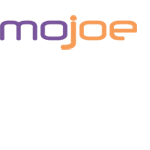In today’s digital landscape, web accessibility has become a critical aspect of website design. It involves creating websites that are inclusive and accessible to all users, including those with disabilities. Designing with web accessibility in mind not only provides equal access to information but also enhances the user experience for everyone. In this article, we will delve into the significance of web accessibility and explore best practices for designing inclusive websites.
- Understanding Web Accessibility: Web accessibility refers to designing and developing websites that can be accessed and used by individuals with disabilities. Disabilities may include visual impairments, hearing loss, mobility limitations, cognitive challenges, or neurological conditions. Web accessibility aims to remove barriers and ensure that all users can perceive, navigate, and interact with websites effectively.
- The Importance of Web Accessibility: a. Equal Access: Web accessibility is a fundamental right, granting equal access to information and services for all individuals, regardless of their disabilities.
b. Broader Audience Reach: By designing accessible websites, businesses can cater to a broader audience, potentially expanding their customer base and increasing engagement.
c. Legal and Ethical Obligations: Many countries have legislation and accessibility standards in place to ensure equal access to digital information. Complying with these regulations not only avoids legal consequences but also demonstrates a commitment to inclusivity and social responsibility.
d. Improved User Experience: Web accessibility practices often result in improved user experience for all users. Well-designed accessible websites are user-friendly, intuitive, and optimized for various devices and assistive technologies.
- Best Practices for Web Accessibility: a. Semantic HTML: Use proper HTML markup and structure to enhance the accessibility of content. This includes using headings, lists, and descriptive alt attributes for images.
b. Keyboard Accessibility: Ensure that all functionalities and interactive elements are operable using a keyboard alone, allowing users who rely on keyboard navigation to access the website.
c. Color Contrast: Opt for a color scheme that provides sufficient contrast between text and background to accommodate users with visual impairments.
d. Alternative Text for Images: Include descriptive alt text for images, enabling users with visual impairments to understand the content conveyed by the visuals.
e. Captions and Transcripts: Provide captions for videos and transcripts for audio content to make them accessible to users with hearing impairments.
f. Clear Navigation: Create clear and consistent navigation structures, making it easy for users to locate and access different sections of the website.
g. Form Accessibility: Design forms that are accessible, including labels, clear instructions, and error validation messages to aid users in completing form fields accurately.
h. Responsiveness: Ensure that your website is responsive and adapts well to different screen sizes and devices, accommodating users who rely on mobile or assistive technologies.
i. Testing and Validation: Regularly test and validate your website’s accessibility using tools such as screen readers, keyboard-only navigation, and color contrast checkers.
- Keeping Up with Accessibility Standards: Stay updated with accessibility standards such as the Web Content Accessibility Guidelines (WCAG) published by the World Wide Web Consortium (W3C). WCAG provides detailed guidelines and success criteria to ensure web accessibility compliance. Aim for WCAG 2.1 AA compliance, which is widely recognized as the industry standard.
Designing inclusive and accessible websites is not just a legal requirement but a moral responsibility. By prioritizing web accessibility, businesses can provide equal access to their digital content, reach a broader audience, and improve the user experience for all users. Incorporate the best practices outlined in this article to create websites that are inclusive, user-friendly, and compliant with accessibility standards, ultimately contributing to a more inclusive and accessible online environment.
 If you would like to discuss Your Website’s Search Engine Optimization with Mojoe.net or your website’s analytics, custom logo designs, overall branding, graphic design, social media, website, web application, need custom programming, or custom software, please do not hesitate to call us at 864-859-9848 or you can email us at dwerne@mojoe.net.
If you would like to discuss Your Website’s Search Engine Optimization with Mojoe.net or your website’s analytics, custom logo designs, overall branding, graphic design, social media, website, web application, need custom programming, or custom software, please do not hesitate to call us at 864-859-9848 or you can email us at dwerne@mojoe.net.


Recent Comments